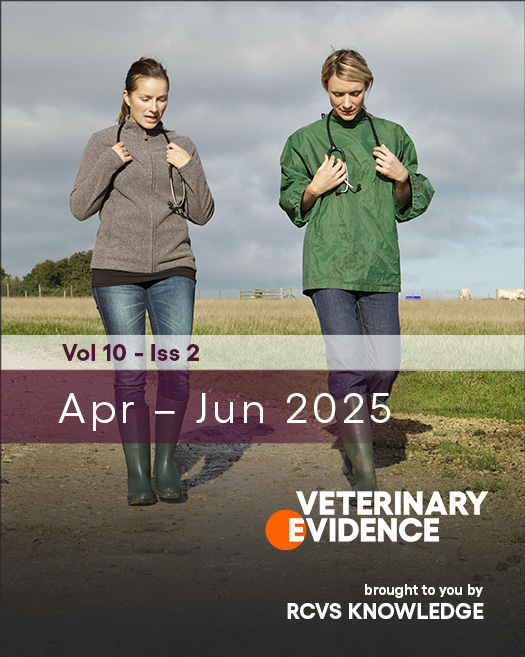DOI
https://doi.org/10.18849/ve.v10i2.706Abstract
Aims and objectives: The aim of this clinical audit was to reduce nonoperative anaesthesia time from 131 minutes to 102 minutes while maintaining surgical site infection rates below 10% for canine tibial plateau osteotomy procedures. Data collected from anaesthesia records and electronic medical records provided the data to measure these aims.
Background: Increased anaesthesia time increases the risk for perianaesthetic complications including surgical site infections. Through anaesthesia record analysis we recognised that nonoperative anaesthesia time was a variable that could be targeted for improvement. Nonoperative anaesthesia time is defined as total anaesthetic time minus surgical time.
Methods: Review of 40 total anaesthetic records (24 initial audit, 16 re-audit) and electronic medical records provided the data we recorded to determine anaesthesia time information and surgical site infection information. Manual audits were conducted to create a value stream map and nonoperative anaesthesia times were analysed for special cause variation utilising statistical process control.
Results: Nonoperative anaesthesia time was 131 minutes, roughly half of total anaesthesia time (270 minutes), while surgical site infection rate was 8.3%.
Implementation of changes (team discussion & changes made): A new communication protocol was trialed between anaesthesia and surgical teams.
Re-audit: The same procedure and analysis were used for the initial audit and re-audit. During the re-audit nonoperative anesthesia time was reduced to 109 minutes and surgical site infection rate was 6.3%.
Application: The communication protocol trialed during the re-audit is still in practice. This audit can be applied to other practices looking to better analyse their anaesthetic time variables and to re-evaluate communication procedures for better patient outcomes.
References
Benneyan, J.C., Lloyd, R.C. & Plsek, P.E. (2003). Statistical process control as a tool for research and healthcare improvement. BMJ Quality & Safety in Health Care. 12(6), 458–464. DOI: https://doi.org/10.1136/qhc.12.6.458
Centers for Disease Control and Prevention. (2024). National Healthcare Safety Network Surgical Site Infection Event. [online]. Available from: https://www.cdc.gov/nhsn/pdfs/pscmanual/9pscssicurrent.pdf
Cook, J.L., Luther, J.K., Beetem, J., Karnes, J. & Cook, C.R. (2010). Clinical Comparison of a Novel Extracapsular Stabilization Procedure and Tibial Plateau Leveling Osteotomy for Treatment of Cranial Cruciate Ligament Deficiency in Dogs. Veterinary Surgery. 39(3), 315–323. DOI: https://doi.org/10.1111/j.1532-950X.2010.00658.x
Gruenheid, M., Aarnes, T.K., McLoughlin, M.A., Simpson, E.M., Mathys, D.A., Mollenkopf, D.F. &Wittum, T.E. (2018). Risk of anesthesia-related complications in brachycephalic dogs. Journal of the American Veterinary Medical Association. 253(3), 301–306. DOI: https://doi.org/10.2460/javma.253.3.301
McCambridge, J., Witton, J. & Elbourne, D.R. (2014). Systematic review of the Hawthorne Effect: new concepts are needed to study research participation effects. Journal of Clinical Epidemiology. 67(3), 267–277. DOI: https://doi.org/10.1016/j.jclinepi.2013.08.015
Nagpal, K., Vats, A., Lamb, B., Ashrafian, H., Sevdalis, N., Vincent, C. & Moorthy, K. (2010). Information Transfer and Communication in Surgery: A Systematic Review. Annals of Surgery. 252(2), 225–239. DOI: https://doi.org/10.1097/sla.0b013e3181e495c2
Nazarali, A., Singh, A. & Weese, J.S. (2014). Perioperative Administration of Antimicrobials During Tibial Plateau Leveling Osteotomy. Veterinary Surgery. 43(8), 966–971. DOI: https://doi.org/10.1111/j.1532-950X.2014.12269.x
Russ, S., Rout, S., Sevdalis, N., Moorthy, K., Darzi, A. & Vincent, C. (2013). Do Safety Checklists Improve Teamwork and Communication in the Operating Room? A Systematic Review. Annals of Surgery. 258 (6), 856-871. DOI: https://doi.org/10.1097/sla.0000000000000206
License
Copyright (c) 2025 Amy Mann, Ciara Barr

This work is licensed under a Creative Commons Attribution 4.0 International License.
Veterinary Evidence uses the Creative Commons copyright Creative Commons Attribution 4.0 International License. That means users are free to copy and redistribute the material in any medium or format. Remix, transform, and build upon the material for any purpose, even commercially - with the appropriate citation.
